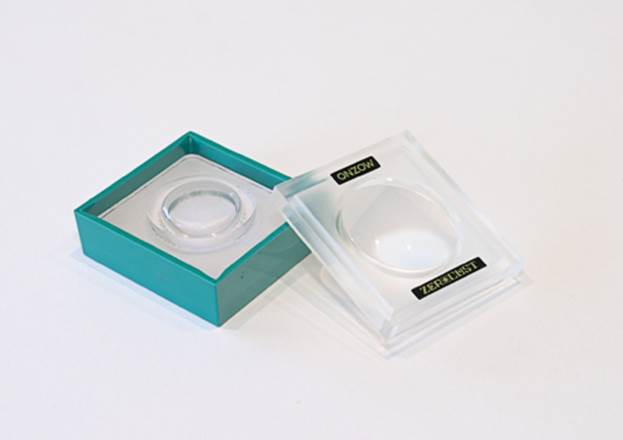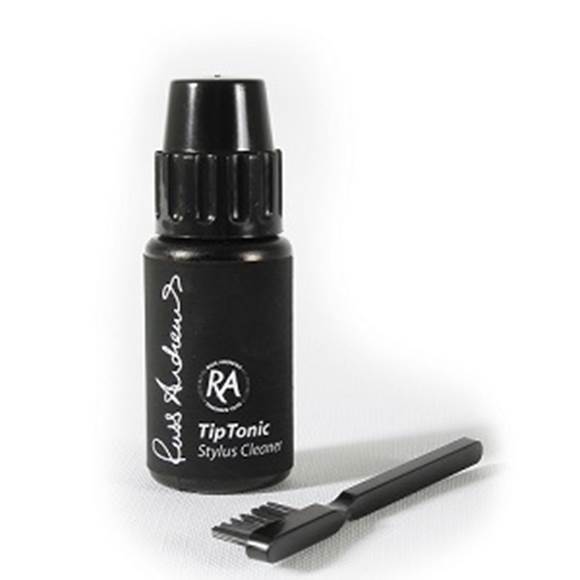Price: $57.9
Website: www.analogueseduction.net
The zerodust users a specially developed ultra-soft polymer
‘bubble’ that envelopes the stylus tip when it is placed on the surface of the
cleaner. The polymer is said to be softer than a baby’s skin and 15 times more
elastic! The lid of the container that holds the polymer incorporates a
magnifying glass that can be used to inspect the stylus after cleaning.
To clean your stylus, simply lower it onto the surface of
the polymer using your arm cuing lever, then quickly lift the lever and you’re
done! The manufacturer states that this unique device will last a lifetime and
can extend the life of your cartridge. When the surface of the polymer becomes
dirty it should be washed in warm water containing a small amount of a neutral
detergent. When clean, the polymer is rinsed and left to dry. Once dry, it
should then regain its adhesive properties and be as good as new and ready to
be used all over again.

Onzow Zerodust
Stylus Cleaner
When I try the Zerodust on my stylus, I find that it does
indeed remove all the accumulated dust and deposits with a single use. The
surface of the polymer does feel quite tacky to the touch, but unlike an
adhesive it leaves no residue whatsoever. This tackiness disappears when the
polymer gets wet and then returns when it dries out, so cleaning the dirt off
with water is very effective.
This cleaner works well in practice and comes with a
magnifier and a lifetime promise, but is a good bit more expensive than the
rest.
Verdict: 4/5
This costly but unique cleaner works well and comes with a
magnifier, and – in theory at least – should never need replacing
Russ Andrews TipTonic Stylus Cleaner
Price: $16.1
Website: www.russandrews.com
This stylus cleaner includes a special application brush.
Apart from removing the little ball of fluff that can accumulate around the tip
after playing a single side of an LP, it also removes hard, baked-on deposits
that can accrue over a period of time.
Although it may sound strange to refer to some deposits as
baked-on, it is considered by many that a stylus tip can get quite hot due to
friction during playing – some say as high as 160°C – so a cleaner that can
gently remove this deposit is very desirable.

Russ Andrews
TipTonic Stylus Cleaner
To clean the stylus tip, a few drops of the cleaning fluid
are applied to the bristles of the brush. The brush is then gently drawn from
the rear of the cantilever to the front, taking care to only apply gentle
pressure at all times. The stylus assembly, including the cantilever and its
support mechanism, should not be stressed at any time. This process will need
repeating four or five times unless the stylus is heavily soiled, in which case
further applications may be required. Finally, the instructions recommend
drying the brush with a kitchen towel or tissue and then, to remove any excess
fluid from the stylus, it should be gently brushed again from back to front
once or twice.
This sort of cleaning isn’t something you would wish to do
after every play as it is quite fiddly. However, it does do a very thorough
job, which was evident after inspecting a nice clean stylus under a microscope.
Verdict: 4.5/5
A high-quality wet cleaner that can also remove any of the
baked-on deposits that tend to accumulate over time
Help & advice
There are plenty of stylus cleaning products available to
keep it in top condition. There are brushes made from carbon fiber, ‘sandpaper’
strips that utilize an abrasive that is softer than diamond, ultrasonic pads
that you rest the stylus in, numerous liquid cleaners that can be used in
conjunction with the brushes and there are tubs of sticky goo into which you
lower the stylus tip to clean it!
However, after a prolonged period of use, some cleaning
products can cause damage to the bonding of the diamond to the cantilever. An
incorrect cleaning method can have a negative effect on the cantilever and
suspension mechanism. Stylus cleaning should always be performed by either
lowering the stylus into the cleaning product, or by gently brushing the tip
from the rear of the cartridge to the front – never front to back.